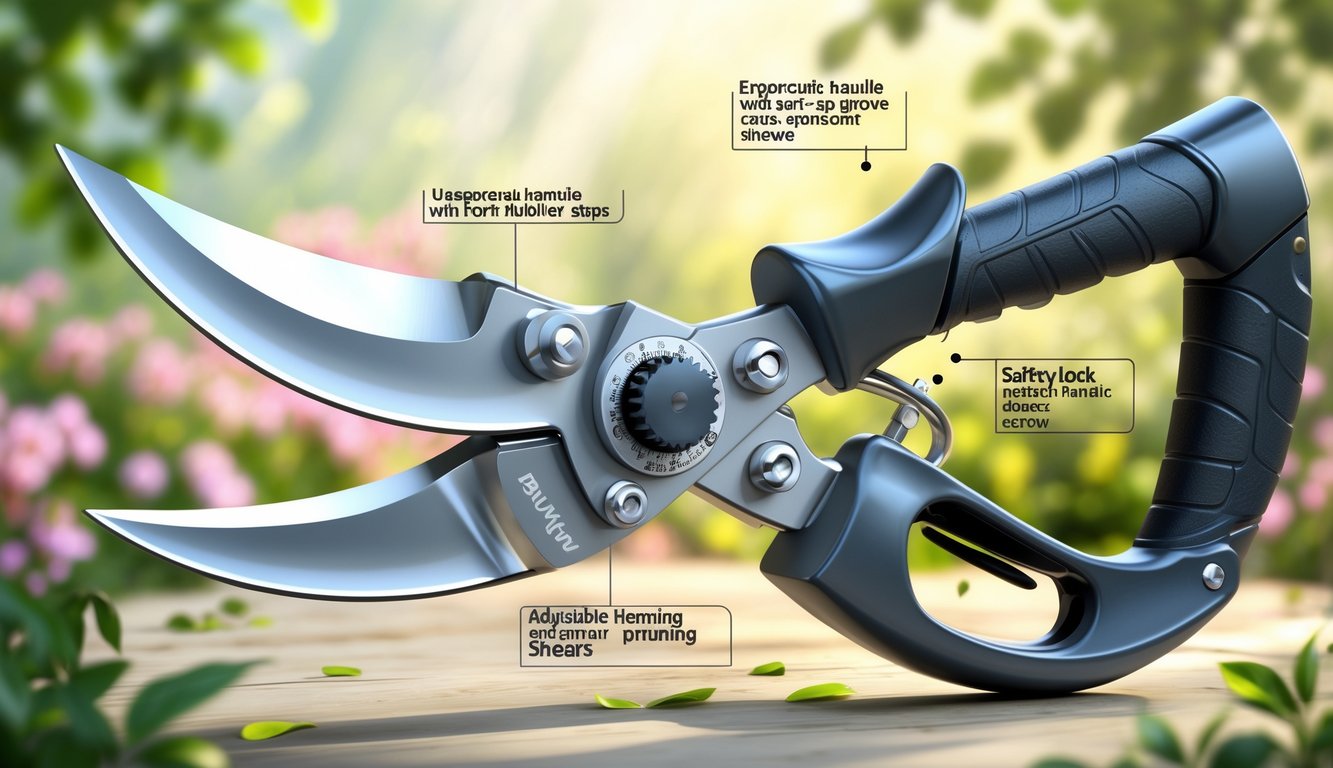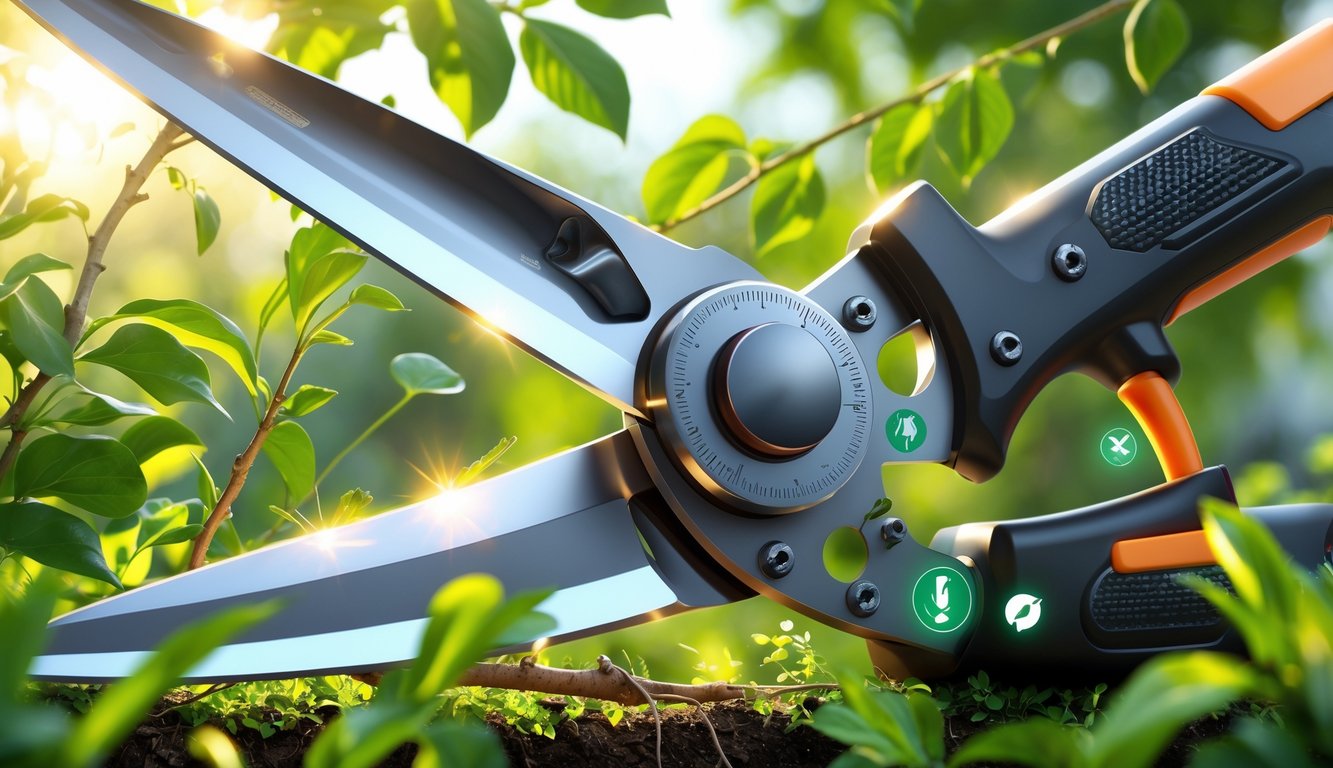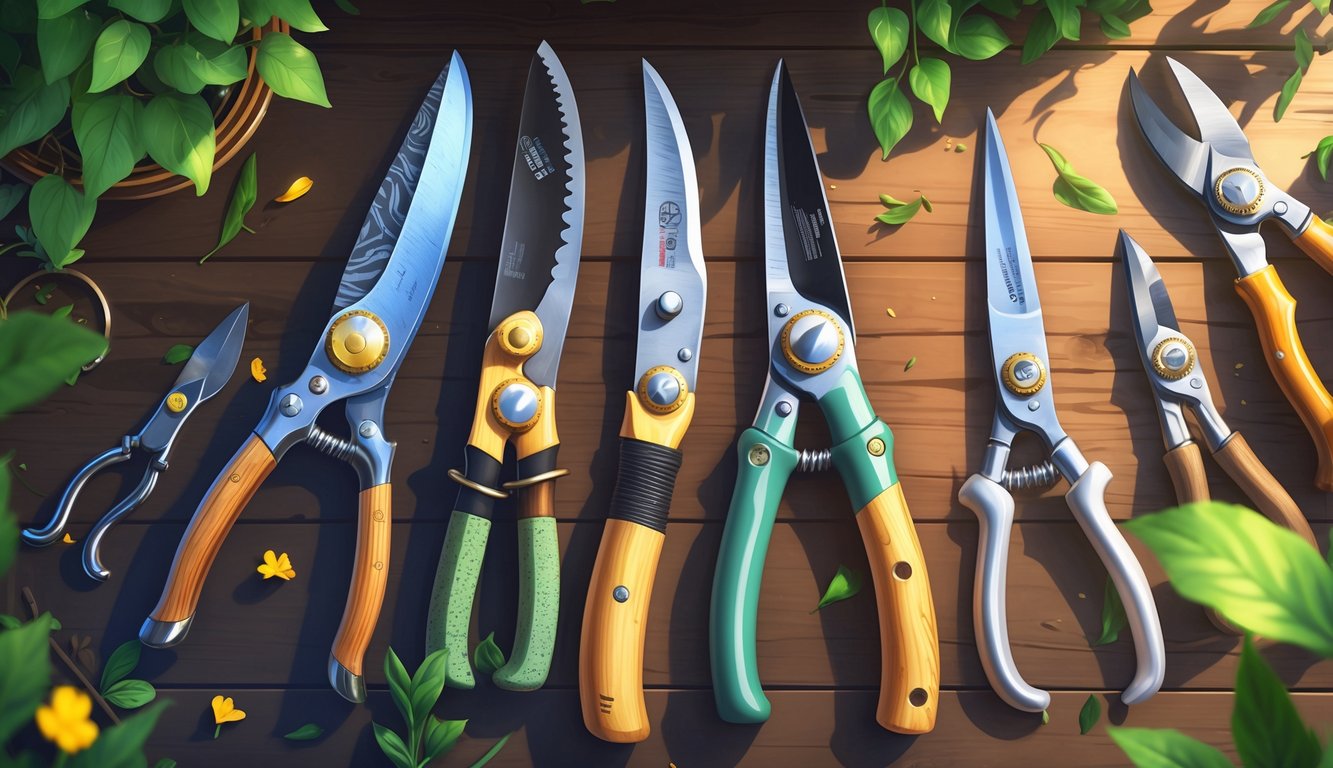
Finesse Options for Bonsai and Delicate Plants
Bonsai? Whole different rabbit hole. You need fine-tip bypass micro-pruners, super-light snips, and that satisfying “snick” when you trim a tiny shoot. Tried using kitchen scissors once—got scolded by the local bonsai club. Titanium-coated blades (like the GROWIT T13, which my friend won’t shut up about) let you get close without bruising, which, yeah, matters.
Funny thing: for delicate stuff, sharpness isn’t everything. Spring tension and grip shape matter way more than I expected—otherwise, your hand cramps after ten minutes and you give up, no matter how “pro” the brand is (see gardenerhow.com’s guide). One-handed operation is crucial when you’re shaping foliage or pinching stems.
Don’t fall for the urge to use heavy-duty pruners just because they look fancy. My azalea still looks traumatized. Micro-pruners—stainless, titanium, whatever—just work better for picky jobs than anything labeled “universal.” But every gift set still throws them all together, which makes no sense.
Cutting Capacity You Didn’t Expect

Lost track of how many times someone handed me a “universal” pruner, and it turned out useless for thick limbs or the tiniest stems. Cutting capacity isn’t just about blade width. The jaw design, the pivot, all those weird details matter way more than the box ever admits.
Wide Jaw Pruners for Thick Branches
People see a chunky ¾ inch branch and think, “Any shears can handle that.” Nope. Most tap out at ¾ inch, sometimes less if the blade’s old or the spring’s sticky from sap.
Ever try to cram a thick stem into skinny-jawed bypass pruners? You end up twisting, swearing, and tearing the branch instead of cutting it. I keep a heavy-duty wide jaw pruner—ratcheting, rated for 1.2-inch limbs. Not one of those “up to 1 inch!” lies stamped on cheap packaging. Even Forestry.com says only dedicated models actually handle more than ¾ inch. But nobody mentions how they weigh down your bag by midsummer.
If someone says you’re overthinking, hand them a viburnum gone wild after a rainy spring. Watch them struggle. I’ve never seen basic bypasses do more than dent thick branches.
Micro-Tip Blades for Detailed Work
On the flip side, try using those big jaws for basil or deadheading. You’ll just shred leaves and maybe your own fingers. Micro-tips aren’t about strength—they’re for precision.
Some brands now sell micro-tip, needle-nose pruners that really only handle stems under ¼ inch. Perfect for deadheading, shaping bedding plants, or thinning tomato suckers. Gardening Products Review lists stem diameters below ¼ inch—anything bigger, and you’re just making a mess.
And honestly, I can never find my micro-tips when I need them. They blend in with kitchen scissors, every time. If anyone claims all pruners work for fine detail, they’ve probably never destroyed a seedling with a “one size fits all” snip. Who wants bruised dahlias anyway?
Surprising Materials and Blade Types

Didn’t expect to care about what my pruner blades are made of, but here we are. Apparently, pros argue about “high-carbon,” “stainless,” “blade retention,” and meanwhile I just want something that doesn’t hurt my hands. Turns out, the wrong combo means ugly cuts, sticky sap, and blisters in weird places.
High-Carbon Steel vs Stainless Steel Blades
I always figured, “Sharp is sharp, right?” Turns out, not really. Watched a nursery tech flat-out say she only uses high-carbon steel—cites it in a Farm City State article—because it slices through woody stuff without hesitation. High-carbon stays sharp longer and makes smoother cuts, which is actually a big deal if you care about plant health.
But, it’ll rust if you leave it outside. Ask me how I know. Stainless steel is everywhere—easy to find, resists rust, but needs sharpening more often. Weirdly, the more expensive the steel, the more likely someone tries to hide scratches under a shiny finish. Favorite advice I ever got: “Buy the steel you’ll actually bother to maintain.” Not catchy, but true.
Special Coatings for Rust and Sap Resistance
Nobody warned me about sap being way worse than rust for gumming up blades. If you prune sticky stuff like lilacs, coatings matter more than the metal. Even the best bypass pruners can get sticky if they don’t have a non-stick or Teflon layer. Some brands use chrome, titanium, or fluorine, and you have to dig to even find out.
These coatings make cleanup way easier—just wipe and move on. Except, sometimes sap leaves a weird film that, according to my friend (who’s an estate gardener), “ruins your line.” Not sure if that’s real, but it stuck with me. And rust? Shows up overnight if you leave tools in the shed—even stainless, which is just unfair. High-carbon with a non-stick coating almost feels like overkill, but after a season, my coated pair looked better than the backup stainless. So, I guess that’s that.